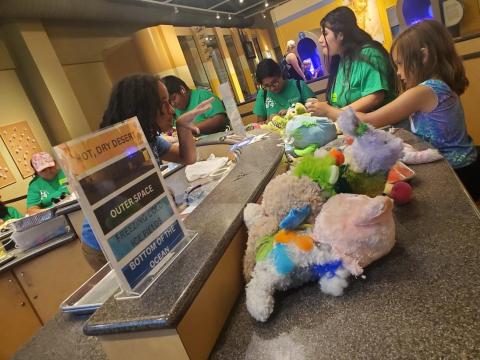
Educators at the Museum of Life and Science (MLS) in Durham, NC have a great adaptation that combines two NISE Network activity favorites, and it's just in time for Halloween!
EXTREME Frankenstuffs is a variation on the NISE Network's Explore Science: Earth and Space Toolkit activity Exploring the Universe: Imagining Life. Instead of drawing, visitors disassemble and reassemble stuffed animals to engineer creatures that can easily adapt to different extreme environments. The activity also reminds us of the Frankenstein200 Kit activity Frankentoy, and if you have one or both of these physical kits, we recommend pulling them out this month for some great spooky science with even the youngest of learners!
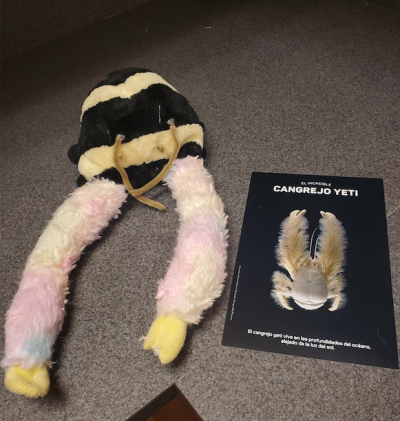
Peregrine Bratschi, Associate Program Manager: Humanity & Life Sciences at MLS, shared the information below as a guide for the EXTREME Frankenstuffs adaptation. Peregrine added that "Participants really get a lot out of the NISE Network resources. In particular, one learner re-created the Yeti crab from one of the extremophile cards! Thanks to all the NISE Network friends making great resources that make for awesome experiences for learners!!"
If you don't have the NISE Network physical kit resources for the original two activities, you can still download supporting materials for both to pair with items that you already have. The MLS adaptation was done as a lab activity where learners didn't just disassemble and reassemble pre-made toy parts (as with the NISE Network Frankentoy activity), but actually cut, glued, and sewed items themselves as part of the program (more info below). We also suggest that If you need a substitution for stuffed animals, some other options could be figurines, morphing/transforming toys, or simple animal paper dolls that participants cut out themselves.
Guides, activity cards, imagery, and more for both the original NISE Network activities can be found here:
Exploring the Universe: Imagining Life Frankentoy
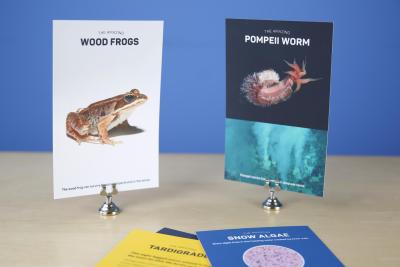
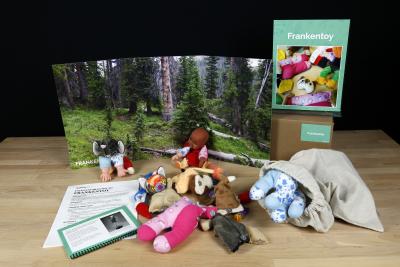
A big thank you to the incredible staff at the Museum of Life and Science for expanding upon these resources and sharing back this creative crossover to our community!
EXTREME Frankenstuffs - an adaptation of the "Exploring the Universe: Imagining Life" activity from the NISE Network Explore Science: Earth and Space toolkit
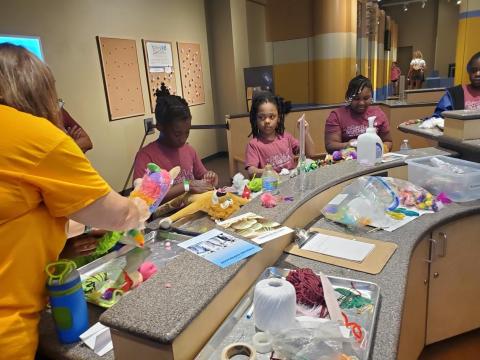
Materials:
- Medium-sized stuffed animals from a second-hand store—look for colorful “stuffies” of a variety of species with no or minimal beans/bead stuffing (or remove beans before activity)
- Disassembly supplies: Scissors, seam rippers
- Assembly supplies: Glue dots, safety pins, masking tape, hot glue, needles, large sewing needles, thread
- Craft supplies: pipe cleaners, pompoms, tissue paper, yarn, felt, crepe paper, ribbons, etc.
- Imagining Life extremophile cards
- “Extreme Environments” list:
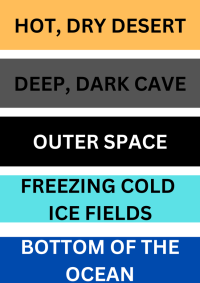
- Hot, Dry Desert
- Deep, Dark Cave
- Outer Space
- Freezing Cold Ice Fields
- Bottom of the Ocean
Safety:
- The activity needs at least one adult to participate per 3-4 children, as there are scissors and safety pins involved, and children often need help cutting or manipulating the stuffie. Participation is at the adults’ discretion.
- Sewing supplies are optional and only distributed to adults. Adults must return the needle directly to the facilitator when finished.
- Hot glue is optional and should only be distributed by the facilitator when the child’s adult is nearby.
- Resetting this activity should include checking table/trays for opened safety pins or any unreturned needles.
Procedure:
- When learners are imagining life on other planets, prompt them to think about what environments exist on other planets. Organisms adapt to their environment over time, so we have to start with where they live!
- Have learners choose an extreme environment that might exist on other planets. Then ask what features the stuffie needs to have added or changed to help them survive in that environment. Ask them what animals on Earth can survive in similar environments—use the NISE Network extremophile cards for reference or prompting.
- Have learners use craft supplies and bits and pieces from other disassembled stuffies to make adaptations. Assist and prompt adults to assist as needed.
- While learners work, you can discuss why organisms would live in such extreme environments (less competition for resources, fewer predators). Share more about other extremophiles or extraordinary adaptations of other animals, and chat about popular imaginings of aliens and speculate about what environments they might live in.
- Have learners share their work and their thinking.
- Though they cannot take their creations home, be sure to tell them to get a picture with it before they go and thank them for doing science with you today!
Tips:
- Limit the amount of stuffies/parts/supplies available to visitors so it doesn’t feel too chaotic. This helps visitors from feeling too overwhelmed. Periodically clear away stray fluff and keep it in a bag for future use.
- Learners might not be sure where to start with their stuffie. Stick with them until they have an idea for at least one adaptation. Remind them that they can also use their imagination, it doesn’t have to be like a real animal. Also, not all traits are directly linked to survival! As long as it doesn’t interfere with an organism’s survival, evolution is pretty lazy (vestigial traits, sexual selection)
- Learners often want to give the stuffies clothes. This is a great chance to talk about the difference between physical and cultural adaptations. Humans and other animals use culture and tools to help them survive.
- Reset might include taking off add-ons that are easily removed so there are still plenty of stuffie parts and craft materials for the next group.
- Children often want to take their stuffies home with them. Tell them that the stuffies have to stay here so that other friends can help them adapt over time, too. Science is a community, so others will add onto what we have made! Suggest that they take a picture with the stuffie instead.
- Learners might take a long time to work on their stuffies, which can be challenging if there are others waiting to do the activity. You can limit learners to only adding one adaptation to their animal. You can also use verbal cues for pacing interactions and managing expectations for those who are waiting:
- “It looks like we have some friends who are waiting for their turn, let’s take 3 more minutes to finish up.”
- “This is a self-paced activity, so a group might take about 10 minutes before we’re ready for a new group."
- "We’ll give this group X more minutes, then it will be your turn."
- This activity could also be done with craft supplies only (no disassembly of parts, just adding or attaching pompoms, pipe cleaners, etc, to the stuffie to represent different "adaptations").
